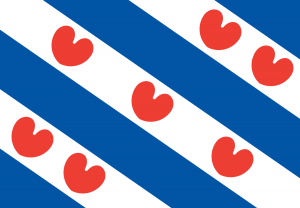Language/Western-frisian/Vocabulary/Common-Greetings
Introduction
In this lesson, you will learn common Western Frisian greetings and how to respond to them, including formal and informal situations. Greetings are essential to any conversation and are often the first impression we make, so it's important to know how to greet someone or respond to a greeting when learning a new language. Western Frisian, a language spoken in the northern region of the Netherlands, has unique greetings that reflect the region's cultural heritage.
With the completion of this lesson, consider investigating these related pages: Count to 10 & Colors.
Formal vs Informal Greetings
Western Frisian has different greetings depending on the context or relationship of the people involved. In formal situations, such as business meetings or meeting someone of higher social status, it's more appropriate to use formal greetings. Informal greetings are used among family, friends, or acquaintances.
Common Greetings
Here are some common Western Frisian greetings you can use in both formal and informal settings:
Hello!
Western Frisian: Hallo!
Pronunciation: [hah-loh]
English: Hello!
When greeting someone in Western Frisian, you can simply say "Hallo". This is a common greeting used in any situation or context.
Good morning!
Western Frisian: Goedemoarn!
Pronunciation: [go-de-moh-run]
English: Good morning!
"Goedemoarn" is used to greet someone in the morning, usually before noon. This greeting is appropriate in both formal and informal contexts.
Good afternoon!
Western Frisian: Goedenmiddag!
Pronunciation: [go-de-mid-ahg]
English: Good afternoon!
"Goedenmiddag" is used to greet someone in the afternoon, usually after noon and before evening. Similar to "Goedemoarn", this greeting can be used in both formal and informal contexts.
Good evening!
Western Frisian: Goedenjûn!
Pronunciation: [go-de-nyoon]
English: Good evening!
"Goedenjûn" is used to greet someone in the evening, usually after sunset. This greeting is appropriate in both formal and informal contexts.
How are you?
Western Frisian: Hoe giet it mei dy?
Pronunciation: [huh kyt it may dee]
English: How are you?
When greeting someone in Western Frisian, asking "How are you?" is a common practice. "Hoe giet it mei dy?" is the standard and formal way of asking this question. In informal contexts, you can simply say "Hoe is it?" which means "How is it?"
I'm fine, thank you. And you?
Western Frisian: Ik bin goed, tankewol. En do?
Pronunciation: [eek bin huet, tanker-vol. en doh]
English: I'm fine, thank you. And you?
When someone asks "How are you?", a common response is "Ik bin goed, tankewol" which means "I'm fine, thank you". "En do?" is added at the end of the response to ask the same question back.
Goodbye!
Western Frisian: Oant sjen!
Pronunciation: [ohnt sigh-en]
English: Goodbye!
When saying goodbye in Western Frisian, you can say "Oant sjen!" which means "Until we see each other again!". This is a common and formal way of ending a conversation.
See you later!
Western Frisian: Oant letter!
Pronunciation: [ohnt leh-ter]
English: See you later!
"Oant letter!" is a common way to say "See you later" in Western Frisian. This is an informal way of ending a conversation among friends or family.
Take care!
Western Frisian: Soarch foar dysels!
Pronunciation: [soah-rkh fohr dih-suls]
English: Take care!
"Sorch foar dysels" is a common way of saying "Take care" in Western Frisian. This is often used at the end of a conversation as a friendly reminder to take care of oneself.
Conclusion
By learning common Western Frisian greetings, you can better communicate and connect with speakers of the language. Make sure to pay attention to the context and relationship of the people involved to use the appropriate greetings. In the next lesson, we will learn how to introduce yourself in Western Frisian.
Other Lessons
- Describing Relationships
- Telling Time
- Fruits
- Clothes
- Greetings
- Common Hobbies
- Education
- Discussing Leisure Activities
- Describing Weather
- Modes of Transportation

